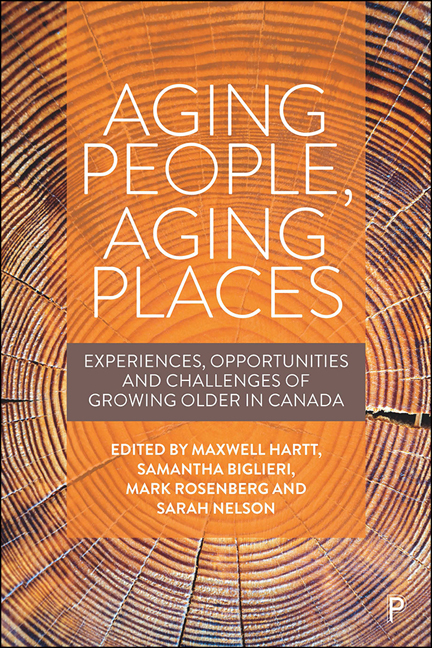8 - Suburban community vignette
Published online by Cambridge University Press: 18 December 2021
Summary
Situated in the middle of Canada's prairie region, Saskatoon is the largest city in the province of Saskatchewan. Nestled on the meandering South Saskatchewan River, Saskatoon has many natural features that make it an attractive place to call home. The warm, long summer days, green, clean spaces, and a variety of social and cultural events contribute to active living, social engagement, and community participation. Saskatoon offers safe, friendly neighbourhoods, a variety of housing options, excellent educational opportunities, public and accessible transit services, increasingly accessible buildings and services, and a range of health and community services. Winter poses challenges for all residents, especially older adults who face safety issues related to icy and cold conditions and resulting in reduced opportunities for social connectedness.
The 2016 Canadian Census lists the population of Saskatoon's Census Metropolitan Area (CMA) as 295,095, 10.9% of whom are Indigenous people. The CMA's population grew 12.5% between 2011 and 2016 – far outpacing the national growth rate of 5%. Population growth was due primarily to immigration related to Saskatoon's rapid economic expansion. Like most cities in Canada, Saskatoon has grown outward from its historic core into mixed-development suburbs. Most older adults live in these car-dependent communities. Saskatoon's Nutana Suburban Centre has the highest density of seniors in Canada. This model of suburban development poses many challenges for citizens as they age, often forcing unwanted moves in order to access needed supports and services.
In 2016, 13.5% of the Saskatoon population was age 65 or older. The older adult population is culturally and socially diverse and consists of multiple generations with vastly differing characteristics, needs, and resources. The most rapidly growing group are those 85 years of age and older.
The Age-Friendly Saskatoon Initiative
This vignette is informed by the voices of hundreds of older adults who participated in the Saskatoon Council on Aging (SCOA)-led Age-Friendly Saskatoon Initiative (AFSI) between 2011 and 2016. Beginning in 2009, a group of older adult SCOA volunteers (authors included) became increasingly concerned about the lack of public policy focused on the unique needs of the aging population. SCOA, a non-profit organization dedicated to promoting positive aging for all, decided to seek the opinions of older adults in Saskatoon. The goal was to promote a community conversation that would lead to changes in attitudes about aging and older adults and provide direction on how to create a more age-friendly city.
- Type
- Chapter
- Information
- Aging People, Aging PlacesExperiences, Opportunities and Challenges of Growing Older in Canada, pp. 109 - 114Publisher: Bristol University PressPrint publication year: 2021



